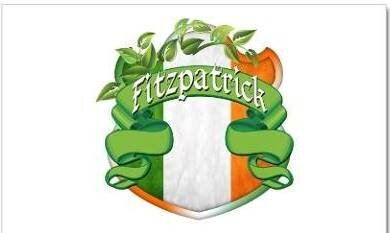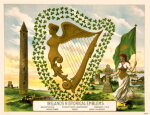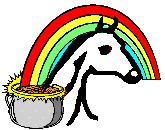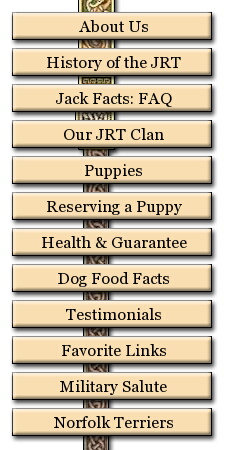|
About Us | Fitzpatrick Roots | Contact Us | Map & Aiken area | Site Contents
 The Irish surname FITZPATRICK means literally 'son of Patrick' and in fact represents Gaelic Mac Giolla Phadraig 'son of the servant of Saint Patrick'. It is believed that Fitzpatrick's are from the line of St. Patrick followers.
It is the only Fitz surname that is of true Irish descent and of native Irish origin. All the other Fitzgeralds, Fitzwilliams, Fitzmaurices, etc. are of Norman French descent.
The Fitzpatrick's can trace direct descent from Mac Giolla Padraig, a warlike chief in Ossory in the 10th century. The principal family of Fitzpatricks ruled in Ossory, and in early times ruled over the entire County of Kilkenny and part of County of Leix. They were known as the Lords and Earls of Upper Ossory. Branches of the family spread and settled in Counties Clare, Leitrim and Cavan and in other parts of Ireland.
The Fitzpatricks were also established in France, where the name was revered in military circles. They were good providers of Churchmen who founded a number of abbeys and monasteries, such as, The Cistercian Abbey at Jerpoint in Co. Kilkenny, founded by Donagh MacGillapatrick in 1158. Their achievements in the Church in Ireland and France are well documented in the Vatican Libraries. The Fitzpatricks also made a name for themselves in Argentina and America. Sir Percy Fitzpatrick helped found the beginnings of the country of South Africa.
They were part of the Irish clans that went to help Sir William Wallace in the early part of 1310 and helped fight against the English and helped Scotland claim their freedom.
Sir Barnaby Fitzpatrick (1535-1581), Lord of Upper Ossory, was educated at court with the future Edward VI and was knighted in 1558.
Brian Fitzpatrick (1585-1652) was Vicar Apostolic of Ossory, and was murdered by Cromwellian soldiers, and it was Brian who was instrumental in saving the Book of O'Brynes', which he had transcribed from destruction. It is similar to the the Book of Kells, now on display at Trinity College in Dublin.
Thomas "Broken-Hand" Fitzpatrick was one of the Greatest Mountain Men. Born in 1799 in County Cavan, he emigrated to the States. As a young man he signed on with Gen. William H. Ashley and to what would become the American Fur Company. Skilled as a trapper, hunter, Army guide and Indian agent, Tom Fitzpatrick blazed much of the Oregon Trail, and his discovery of South Pass in the Rockies provided a gateway to western expansion. His exploits earned him the reputation as the greatest of mountain men. His friends were the giants of the West who, like himself, helped make history - Kit Carson, Jim Bridger, Jedediah Smith, John Fremont, Stephen Kearny and Jim Clymer. But it is Tom Fitzpatrick who captured the imagination by his resourcefulness, fearlessness and extreme courage. There is a Fitzpatrick Wilderness Area in the Wind River Range of Wyoming named after him. The other side of that same mountain is named the Bridger Wilderness Area; they were young men who partnered together for many geological discoveries and were responsible for exploring and mapping much of the Rocky Mountain Range. There is also a Fitzpatrick Recreation Park in West Virginia named after him. There is a Mountain Man statue and huge memorial tower and wall documenting their explorations and exploits in Wyoming. He died Feb. 7, 1854.
Richard Fitzpatrick (1747-1813) began his career in the British army, entered Parliament and became Chief Secretary for Ireland in 1782, and Secretary of War in 1783.
Joseph Fitzpatrick (1710-1778) settled in Massachusetts. He fought and led the Irish brigades in our Revolutionary War in 1776.
Patrick Kelly and Patrick Fitzpatrick were heroes in the American Civil War and leaders of the Irish Brigades. They always carried three flags, one with a large Shamrock on it, one showing the Irish Harp, and the third was the American flag. They were instrumental in helping win and end the War Between the States.
Patrick Vincent Fitzpatrick was prominent in Ireland's politics and one of the most trusted colleagues of Daniel O'Connell, the Liberator.
Benjamin Fitzpatrick, born 1802, became an American Senator. In the 1840's he became Governnor of the state of Alabama.
It was a Fitzpatrick in our modern times who first invented the seamless cast iron pipe and the company who he worked for (who shall go un-named) claimed it as work product and provided him with a bonus, which at the time was customary.
There was an exhibit in the South Carolina State Museum that had a caption of 'a Fitzpatrick who first invented the telescope'...this was on a field trip when Sean was in fourth grade and I accompanied the group. Now I thought Leonardo Da Vinci discovered the telescope. Maybe they meant a Fitzpatrick invented the stand it was propped up on, who knows?
Billy Fitzpatrick is one noted who won 5 All-Ireland Senior Hurling Championships with Kilkenny in 1974, 1975, 1979, 1982, and 1983.
Dermot Fitzpatrick of Co. Laois, T.D. was first elected to Dail Eireann in 1987.
The name today is the sixty-first most numerous in Ireland, with about 10,000 members strong. The greatest numbers are found in Co. Laois, part of the homeland, and the name is found widely throughout Ireland.
There is Dr. Colleen Fitzpatrick from Chicago who is doing geneology searches using DNA to trace any Fitzpatrick to see which section of Ireland their line originated. About half can directly trace back to the Clan Fitzpatrick from County Ossery in the 10th to 14th centuries. Another 25% are from a different Fitzpatrick line and the last 25% are blended into all the counties and not related to the Brian Fitzpatrick line.

Irish people know Irish dogs!!


Librarians of Trinity College provide analysis and historical background to the Book of Kells. It is the most spectacular of a group of manuscripts created in Ireland and northern Britain between the seventh and tenth centuries, a period when Irish monasticism was in the vanguard of Christian culture. Its earliest history remains controversial but it was in the keeping of the monastery of Kells, Co. Meath, for most of the Middle Ages - hence its name - and has been in the library of Trinity College Dublin, since the mid-seventeenth century. It is a masterpiece of medieval art - a brilliantly decorated copy of the four Gospels with full-page illustrations of Christ, the Virgin and Child and the Evangelists, and a wealth of smaller decorative painting that does not always relate to the sacred text. The strange imagination displayed in the pages, the impeccable technique and the very fine state of its preservation make it an object of endless fascination. The illustrations show the almost unbelievable minuteness of the detail - spiral and interlace patterns, human and animal ornament - a combination of high seriousness and humor. Accompanying the illustrations is added a new, up-to-date text by Bernard Meehan, the current Keeper of Manuscripts at Trinity College Dublin. He provides a scholarly analysis of these exuberant inventions, the artists, the text and the writing, and a full account of the historical background to the miraculous world of the Book of Kells.



The History of Ireland when told in pictures always showed the famous six symbols of ancient Ireland:
The Celtic Cross, Claddagh, Shamrock, harp, newgrange spiral and Trinity knots. Trinity knots symbolize God's endless love.
The Story of the Irish Race
Everyone knows that St. Patrick drove the snakes from Irish soil, and each time he did he was standing on a group of shamrocks. And he used the shamrock's three petals to explain the relationship between the Father, The Son and The Holy Spirit to his countrymen whom he converted to Christianity from Druid worship.
We all know that the Irish are a great race of fighters and poets and singers and saints, that Tristan's Isolde came from Ireland and that from time immemorial the Irish and English have been at loggerheads and still are. But the average well-read American knows little more of the great history of the Irish people - a history too important to ignore, and a chronicle too fascinating to miss.
DID YOU KNOW THAT:
The first man of Columbus' crew to step on American soil was an Irishman names Patrick McGuire? The continent later known as America was referred to as "Great Ireland" by ancient geographers long before Columbus?
According to the ancient historians Euschiums and Cicephorus, some of the apostles visited Ireland - among them James, Simon Zelotus and St. Paul?
Cromwell's propaganda against the Irish included the interesting information that Irishmen had tails six inches long? (His massacres at Drogheda and Wexford read like pages of Nazi atrocities in Oland and the Ukraine.)
Irish schoolmasters - defying the English laws - taught Latin and Greek under the hedges, and that these classical languages were so commonly known that the "cows were bought and sold in Greek" in mountain marketplaces?
Sons of Erin
Irish Songster of the American Civil War
Irish songs, ballads, musical history and lyrical and poetic legacy were of the American Civil War. The Irish in America, volunteered for the Patriot cause in greater proportion to their numbers in the population than probably any other group. (as noted by Michael J. O'Brien and other historians). In England it was later said that "the Line of America (i.e. army line of battle) was the Line of Ireland"; a report in the Westminster Parliament concluded that England had "lost America through the Irish". The book documenting this has been respectively dedicated to the Fenian Brotherhood and Friends of Irish Independence.



About Us | Fitzpatrick Roots | Contact Us | Map & Aiken area | Site Contents
|
















